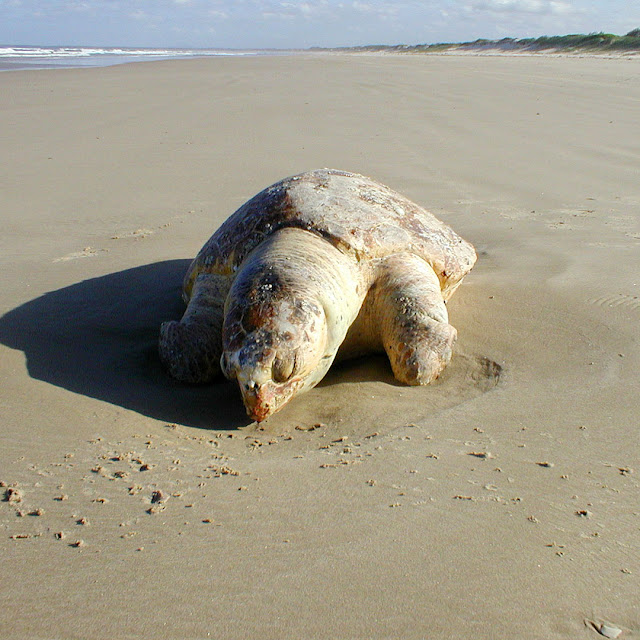I came across this Green Sea Turtle Chelonia mydas washed up on the beach at Iluka, New South Wales in March 2003. Green turtles are not in fact green, at least on the outside. They are so named because of a layer of green fat under their carapace (shell).
These peaceful creatures are herbivores, grazing on seagrass in shallow waters. Their feeding grounds and nesting beaches are thousands of kilometres apart and female turtles migrate long distances in order to lay their eggs. The young turtles' sex is determined by the temperature, and rising temperatures are leading to a critical lack of males. The little hatchlings, if they make it to the sea and survive, might live to be 80 years old. An adult turtle like this one may have been hit by a boat or caught in a fishing net to end up dead on the beach like this.
They are endangered and supposedly protected world wide, but in some places their eggs are still eaten, and light pollution and urbanisation of coastal areas disrupts their life cycle. A mature turtle is about a metre and a half long and weighs about 120 kilograms. Green turtles are distributed world wide in tropical and sub-tropical oceans. Australia's Great Barrier Reef, and the Caribbean Sea have the largest populations.
The 79 hectare Raine Island, off the Far North Queensland coast, is the most important breeding site in Australia. A hundred thousand females have been counted coming to lay their eggs on the island's beaches but in the past few decades this coral cay has changed shape and beach profile, causing thousands of turtles to die as they struggled up the increasingly steep beaches. Recently a large scale conservation project has intervened to reshape the island, and investigations are ongoing to work out how to keep the water temperature cool enough to produce more males. The island is monitored by satellite and drones.



1 comment:
I'm afraid it is a race against time, So sad!
Post a Comment